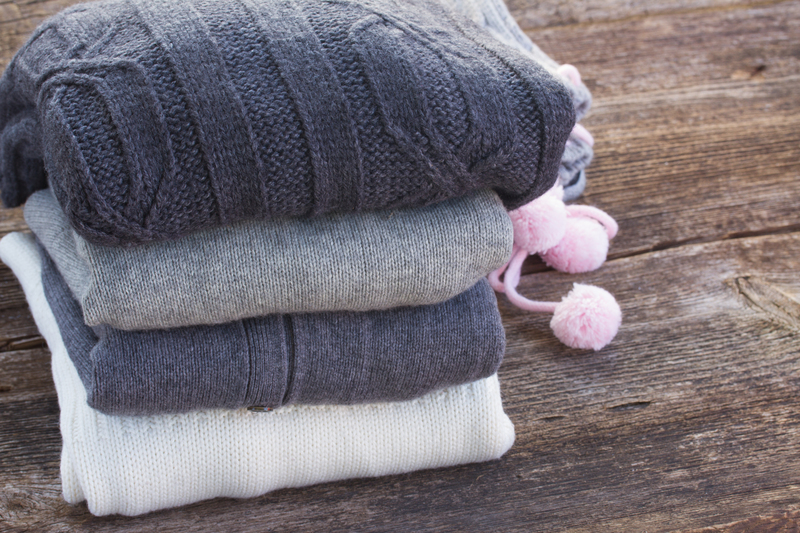Easy to Follow PPE Waste Disposal Techniques
Personal Protective Equipment (PPE) has become an essential part of our daily lives, especially in healthcare environments and public spaces. However, the increase in PPE usage has resulted in a surge of PPE waste, which poses a threat to the environment and public health if not disposed of correctly. In this comprehensive article, we'll guide you through easy to follow PPE waste disposal techniques that are eco-friendly, safe, and compliant with regulations.

Understanding PPE and Its Impact on the Environment
Before diving into the best PPE waste management methods, it's critical to understand what PPE includes and why its proper disposal matters.
- Masks: Surgical masks, N95 respirators, cloth masks
- Gloves: Disposable nitrile or latex gloves
- Gowns and Aprons: Single-use or reusable types
- Face Shields and Goggles: Sometimes disposable, often plastic-based
- Shoe Covers and Hair Nets: Common in medical and clean environments
Most single-use PPE is made from plastic derivatives, such as polypropylene, and is not biodegradable. When disposed of irresponsibly, PPE waste can clog waterways, harm wildlife, and contribute to the ever-growing plastic pollution crisis worldwide.
Why Proper PPE Waste Disposal Is Important
- Prevents Environmental Pollution: PPE is not designed to break down quickly, causing long-lasting litter and microplastics.
- Protects Human Health: Used PPE can be contaminated with viruses, bacteria, or hazardous substances.
- Complies with Safety Regulations: Many jurisdictions require specific disposal protocols for infectious or biohazardous PPE.
Let's explore effective PPE waste disposal methods that everyone--from healthcare professionals to the general public--can follow.
PPE Waste Segregation: The First Step
Segregation is the most fundamental part of PPE waste disposal. Separating PPE from regular waste ensures safer handling, reduces contamination risks, and supports recycling. Here's how you can do it:
Color-Coded Disposal Bins
- Yellow Bags/Bins: Designated for infectious or clinical waste PPE (used in hospitals, clinics, COVID-19 sites).
- Red Bags/Bins: Used for biohazardous materials in laboratory settings.
- Blue/Green Bins: Sometimes used for general non-infectious PPE waste.
Tip: Make sure all bins are clearly labeled and located in prominent, accessible areas.
Best Practices for Collecting PPE Waste
**Whether at home, in healthcare, or at the workplace, following these easy steps helps prevent contamination:**
- Do not touch used PPE directly. Use tongs or wear gloves when collecting PPE waste.
- Place PPE items directly into the right disposal bin. Do not throw PPE in regular trash.
- Tie waste bags securely. This reduces the risk of leaks or spills.
- Wash your hands thoroughly after disposing of PPE.
When dealing with suspected or confirmed COVID-19 PPE waste, consider double-bagging for extra security.
Safe PPE Disposal Techniques for Households
Disposing of Masks and Gloves at Home
- Designate a bin specifically for PPE waste. Avoid mixing it with regular household waste.
- Bag PPE waste separately. Use a plastic bag, tie it tightly, and place it in your outdoor bin.
- Do not recycle single-use PPE. Disposable masks and gloves are not suitable for domestic recycling streams.
If someone in your home is sick, isolate their PPE waste for at least 72 hours before adding it to the general waste bin, reducing possible infection risks.
How to Handle Reusable PPE
- Wash reusable masks and gowns in hot water (at least 60?C).
- Do not reuse items that are visibly soiled or damaged. Dispose of them as PPE waste.
PPE Waste Disposal in Offices and Public Spaces
Many offices, shopping centers, and public institutions now provide PPE stations. To ensure safe and easy PPE disposal at these sites:
- Bin Placement: Position bins at exits and high-traffic areas.
- Clear Signage: Use visible signs indicating PPE waste bins.
- Staff Training: Instruct janitorial/agencies on proper handling procedures and use of PPE themselves.
- Regular Collection: Empty bins frequently to prevent overflow and reduce contamination.
Note: Never discard PPE waste in public recycling bins; it can contaminate entire recycling batches.
Healthcare Facilities: Rigorous PPE Waste Disposal Strategies
Healthcare settings have the strictest PPE disposal regulations because of the higher contamination risk.
Key Points:
- Sharps and PPE: Needles and sharp items should go in puncture-proof sharps containers, not standard PPE bags.
- Health and Safety Protocols: All staff should wear gloves and masks when managing PPE waste bags.
- Transport: Move filled PPE waste bags using dedicated carts, avoiding patient areas.
- Storage: Keep PPE waste in a secure area before collection by a licensed waste contractor.
Infectious PPE waste should be handled as clinical waste and sent for incineration or other approved treatment methods.
Environmentally Friendly PPE Waste Disposal Techniques
Since most disposable PPE is plastic, we must consider eco-conscious alternatives. Here are some responsible ways to reduce and dispose of PPE waste:
Encourage the Use of Reusable PPE
- Cloth Masks: Washable and reusable, reducing waste burden.
- Reusable Gowns and Face Shields: Made from materials that can be disinfected and reused multiple times.
PPE Recycling Initiatives
- TerraCycle and Similar Programs: Specialized companies now offer PPE recycling, where collected waste is converted into raw materials.
- Hospital Partnerships: Some hospitals collaborate with recycling firms to process PPE waste into construction materials or fuels.
- Check for Local Schemes: Search for local pilot programs accepting masks, gloves, or goggles for recycling.
Advanced Treatment Technologies
- Incineration: High-temperature incineration destroys pathogens and reduces PPE waste volume significantly.
- Autoclaving: Steam sterilization allows for safer handling before landfill disposal.
- Pyrolysis: A newer technology that transforms plastic-based PPE into usable oil or gas with negligible emissions.
Tip: Never try to burn PPE waste yourself; seek professional disposal services to avoid releasing toxic fumes.
Common Mistakes to Avoid When Disposing PPE
- Do not litter or flush PPE items down toilets. This blocks sewage systems and pollutes waterways.
- Do not mix PPE with recyclables. Cross-contamination can ruin batches of recyclable materials.
- Never spray disinfectant on PPE and throw it in regular waste. Disinfection should be done as part of official protocols, not at home.
Following the right disposal techniques is essential for public health and environmental protection.
Legal Guidelines for PPE Waste Disposal
Every country and region may have its own PPE waste management rules. It's important to follow your local laws. In many places:
- Healthcare PPE waste must be categorized as "clinical" or "biohazardous" and handled separately from domestic waste.
- Businesses generating PPE waste must arrange for licensed hazardous waste contractors.
- Households are advised to double-bag and secure PPE waste before disposal.
PPE Waste Disposal: Step-by-Step Guide
- Prepare a dedicated bin: Label it for PPE waste only.
- Use disposable gloves to pick up PPE waste.
- Place all used PPE in a strong, sealable plastic bag.
- Tie the bag securely.
- Dispose of it according to local guidelines: Put in general waste, clinical waste, or arrange for collection as recommended.
- Wash hands thoroughly after disposing of PPE.
Community Involvement and Awareness
- Public Education: Share information about proper PPE waste disposal through local campaigns.
- Community Drives: Organize PPE waste collection events in your area.
- Schools and Workplaces: Teach students and employees about correct disposal.
The more people understand the importance of proper PPE waste handling, the cleaner and safer our environment will be.
Innovative PPE Disposal Solutions
In response to the global increase in PPE waste, researchers and companies are developing new solutions, such as:
- Biodegradable PPE: Made from plant-based materials, these break down more quickly in the environment.
- PPE Waste-to-Energy: Turning PPE waste into electricity or fuel through specialized plants.
- Smart Bins: Sensor-equipped bins that notify waste services when full or can automatically disinfect contents.
While not yet widespread, these innovative PPE disposal techniques are promising steps towards sustainable waste management.

Conclusion: Making PPE Disposal Easy and Effective
Proper PPE waste disposal is crucial for safeguarding public health and the planet. By following these simple yet powerful techniques, everyone-- from families to healthcare professionals--can do their part. Always separate PPE waste, use designated bins, never mix with recyclables, and stay updated with your local guidelines.
With easy-to-follow protocols, adequate awareness, and a community-focused approach, we can manage PPE waste responsibly and minimize its impact. Remember: Your choices make a difference!
Frequently Asked Questions About PPE Waste Disposal
- Can PPE be recycled in household recycling?
No. Single-use masks and gloves should never go in regular recycling bins. Check for specialized recycling programs. - How should I dispose of a reusable mask?
Reusable masks can be washed and reused as long as they are not damaged. When worn out, they should be disposed of with other PPE waste. - What if my local authority has no PPE collection scheme?
Safely double-bag used PPE and place it in your regular waste bin, following hygiene protocols.
For more tips and updates on easy to follow PPE waste disposal techniques, stay connected with local waste management authorities and health organizations.
